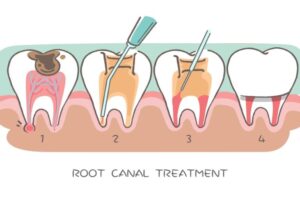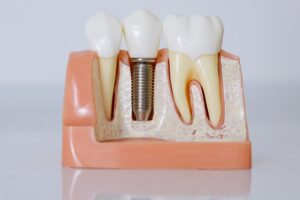An interdental space, or diastema, is a very prevalent dental condition that occurs in patients of all ages. For some, it is a unique characteristic of their smile, but for others, it is a source of embarrassment or fear. Gap filling between teeth is not merely a cosmetic procedure but also a major aspect of the maintenance of oral health and functionality. The treatment process is a series of treatments that differ in approach, cost, and benefit. This thorough guide explains the complexity of filling the gap between teeth with extra emphasis on the teeth gap filling cost between teeth and other pertinent information for meaningful choices.
Why Do People Want to Fill the Gap Between Their Teeth?
The necessity to close tooth gaps is being triggered by a mix of aesthetic, functional, and health factors. Some are naturally occurring as a result of genes, while others are a result of lost teeth, periodontal infection, or thumb sucking as a child.
Aesthetic Concerns
For most people, an asymmetrical smile or gapping between the front teeth will cause self-esteem issues and avoidance of smiling altogether at work or in social situations. A gapless, smooth denture provides a pleasing appearance to the face and enhances self-esteem. Most people choose teeth gap treatment just to have a more aesthetic smile, and this enhances the quality of life as a result.
Functional Problems
Other than appearance, teeth gaps may cause very severe functional issues. Misaligned bites due to teeth gaps or missing teeth can lead to inefficient chewing, which affects digestion. Moreover, teeth gaps can lead to speech disorders, such as a lisp or mumbling, particularly when the gaps occur in the front segment. Obtaining professional teeth gap treatment not only contributes to attractiveness but also results in the effective functioning of the teeth.
Dental Issues
Interdental spaces have a likelihood of trapping food fragments and plaque in hard-to-reach spaces, and hence, there are higher chances of dental caries and gum disease. Malocclusion in the distribution of the bite might result in uneven wear of some of the teeth, and this may result in long-term tooth issues. Preventing such issues through expert teeth gap treatment eliminates such issues from arising, hence leading to long-term oral well-being.
Closing gaps with teeth gap treatment isn’t merely cosmetic it’s a precaution for sound overall dental health. Understanding why the treatment is needed makes individuals better armed in their path with foresight and direction.
What Are the Options for Closing Gaps in Teeth?
Dentistry provides numerous treatments to close teeth gaps. The most appropriate treatment to employ depends on the size of the gap, the reason for the gap, the cost, and the individual’s choice. The following are the most common teeth gap treatments.
1. Dental Bonding
Dental bonding is a procedure in which tooth-colored resin material is bonded onto the teeth, filling the gap perfectly. The resin is shaped and polished to conform to the structure of the tooth, which is an instant and cost-effective solution.
- Advantages: Cheap, quick procedure, non-surgical.
- Disadvantages: Not as long-lasting as other procedures; stains with age.
The teeth gap filling cost is mostly ₹3,000 to ₹8,000 per tooth, so the first in line for those who desire something cheap and fast.
2. Dental Veneers
Veneers are a thin layer of composite resin or porcelain that is specifically fitted over the front of the teeth. More long-term, more cosmetic than bonding.
- Advantages: Long-term, stain-free, highly aesthetic.
- Disadvantages: Costly compared to bonding, involves minimal reduction of the teeth.
The teeth gap filling cost for veneers falls between ₹15,000 to ₹35,000 per tooth. Veneers not only fill gaps but are also employed to make teeth better and shape them.
3. Orthodontic Treatment
Braces or unnoticeable aligners (i.e., Invisalign) push teeth over time to close gaps. More suitable when the gap has formed because of alignment and not because of tooth loss.
- Advantages: Permanent, makes the overall bite and alignment better.
- Disadvantages: Time-consuming (years), moderate to high expense for teeth gap filling cost based on complexity.
Orthodontic teeth gap treatment may range from ₹30,000 to ₹80,000 and provides a permanent solution in the case of incremental tooth movement for closure of space.
4. Dental Implants
Dental implants offer a functional and permanent restoration in areas where there are missing teeth. It is accomplished by placing a titanium post in the jawbone and capping it with a crown, which is an imitation of a natural tooth.
- Advantages: Natural-looking and permanent restoration of complete function.
- Disadvantages: Longer healing time, surgery, and higher teeth gap filling cost.
The teeth gap filling cost for dental implants generally varies between ₹30,000 to ₹80,000 per implant, depending on case complexity, technology, and implant brand.
5. Bridges
Dental bridges consist of crowning the neighboring teeth with a false tooth placed between them, essentially filling the gap. It is most effective where several teeth have been missing.
- Advantages: More stable, cheaper than implants, quicker than implants.
- Disadvantages: Requires recontouring of the neighboring teeth, less stable than dental implants.
All teeth gap treatment possesses some advantages and disadvantages, hence it is necessary to seek professional advice from a dentist to know what is the most suitable method for individual use.
Read More: Best Dental Care in Gurgaon: Specialist Dentists, Implants & Root Canal Treatment
Factors Affecting the Cost of Filling Gaps Between Teeth
The tooth gap filling cost greatly relies on several factors. It is easy for the patients to stay realistic and budget for it with the awareness of such factors.
1. Type of Treatment
The type of teeth gap treatment to be adopted is the greatest factor in estimating the price. For example:
- Dental Bonding usually costs ₹3,000 to ₹8,000 per tooth.
- Veneers are ₹15,000 to ₹35,000 per tooth.
- Braces and Aligners: ₹30,000 to ₹80,000.
- Dental implants will cost around ₹30,000 to ₹80,000 for one implant.
2. Geographic Location
The geographic location of the dental clinic is one of the parameters in calculating the teeth gap filling cost. The places or regions where living conditions are good generally have costly treatments. But India has proven to be one of the popular low-cost but quality dental care destinations.
3. Experience of the Dentist
An old and highly qualified cosmetic dentist might be able to charge a higher price for his experience, advanced procedure, and good reputation. Luxurious clinics that are equipped with high technology can also pay a higher price, influencing the overall teeth gap filling cost.
4. Material Used
The material and quality utilized in the treatment decide the teeth gap filling cost. For instance, good-quality dental implants and porcelain veneers give a natural look and more strength, so the cost is higher than composite resin.
5. Complexity of the Case
Simple cases with small gaps need fewer teeth gap treatments, whereas complex cases with malalignment, several missing teeth, or unhealthy periodontal conditions need extensive treatments, which contribute to a higher overall teeth gap filling cost.
6. Additional Procedures
Pre-treatment procedures such as bone grafting (in dental implant cases) or periodontal therapy can be necessary in certain cases, which increases the teeth gap filling cost
How to Select the Best Treatment for Closing Teeth Gaps?
The choice of the best teeth gap treatment is a balancing act between numerous factors, including personal needs, oral health status, cost, and outcome. As wonderful as your cosmetic dentist is, it is useful to know what factors are most important.
1. Determine the Cause for the Gap
It is important to identify the cause of the gap. Gaps of normal spacing or minor misalignment can easily be filled with veneers or bonding. However, in case the gap results from missing teeth, a bridge or dental implants may be the only viable alternatives.
- Orthodontic causes (developmental spacing or crooked bite): Orthodontic correction with braces or aligners is best.
- Missing teeth: Dental bridges or dental implants are best.
- Minor aesthetic imperfections: These are generally simple to correct through the use of veneers or bonding.
2. Measure the Length of the Solution
The patient must consider how long they want the solution to be. For instance:
Dental bonding will last between 3 to 7 years before refinishing or replacement will be required.
- Dental implants and veneers are more permanent, lasting 10-20 years or a lifetime with proper care.
- Orthodontics is a long-term solution, but it must include the use of retainers to ensure results last.
For individuals willing to spend on the long-term smile and teeth well-being, dental implants and orthodontics are strongly recommended despite the extra initial teeth gap filling cost.
3. Compare Cost With Benefit
Teeth gap filling cost is the largest decision point because it is expensive. The bonding and veneers are typically the options of the people who want a cheap, quick fix. Success in these procedures is, however, uncertain:
- Bonding is less expensive but will require constant repairs.
- Veneers is a cost/durability compromise.
- Dental implants, in spite of the greater short-term cost, provide the lowest maintenance long-term solution.
Short-term costs must be balanced against long-term benefits and determine whether more upfront expenses could recoup them in the end.
4. Consider the Procedure Time
Treatment time is highly distinguished among the various alternatives:
- Dental veneers and bonding typically require 1–2 visits over a period of weeks.
- Orthodontics using braces or aligners can take years or several months.
- Dental implants are a multi-phased process, from consultation through surgery, healing, and crown installation usually 3 to 6 months.
Individuals who have limited time would want things to go quicker, while individuals who are not so pressed for the optimum outcome may opt for dental implants or orthodontics.
5. Screen for Medical Conditions and Bone Status
For dental implants, adequate bone density is required in order to accept the implant. In the region of bone loss, other treatments such as bone grafting need to be done, which adds complexity and teeth gap filling cost.
Those individuals with specific chronic diseases, such as diabetes or periodontal disease, need to heal these conditions first before undergoing treatment to prevent complications from the treatment process itself and post-treatment.
6. Aesthetic Expectations
Others prefer appearance over time or finances. In this case, porcelain veneers or dental implants are the option because they provide the most natural tooth likeness in shape, color, and function. Bonding, while as useful as it is, cannot replicate porcelain’s translucency and strength.
7. Maintenance Needs
With each teeth gap treatment is an expectation of maintenance:
- Long-term re-polishing or re-replacement is sometimes necessary for veneers and bonding.
- Dental implants are very long-lasting but need to be seen periodically by the dentist in order to have a healthy implant and gum tissue.
- Orthodontic treatments require retainers to be worn during treatment to keep teeth in position.
An informed choice takes into account patient compliance with attendance to maintenance regimens and frequencies.
8. Personal Comfort and Lifestyle
Patients must inquire whether they are comfortable with surgery or with constantly wearing braces/aligners. Others do not choose more invasive treatments like veneers or bonding because of fear of the operating room or just because of time constraints. Other patients who want a permanent option will embrace dental implants with their permanent smile and function restoration.
Why India for Dental Procedures?
India is now one of the world’s favorite holiday destinations for quality yet low-cost dental care, particularly teeth gap treatment and dental implants. India is a point of interest for dental patients all over the world owing to several factors.
1. Low Cost
The teeth gap filling cost in India is less expensive than in Western nations such as the United States, the UK, or Australia. This is because of cheap labor, inexpensive infrastructure, and easier availability of quality materials at cheaper prices. For example:
- A dental implant in India can cost between ₹30,000 and ₹80,000 for a single tooth, while the same can cost between ₹2,49,000 and ₹5,81,000 in America.
Even veneers and bonding treatment are carried out at much lower prices without sacrificing even a little on quality. Cost-conscious medical tourists thus seek assured standards.
2. Higher Quality Care and Expertise
India has a huge reservoir of expert and well-experienced dental surgeons, with the majority having received foreign training and education. The dental clinics of the major cities of Mumbai, Delhi, Bangalore, and Hyderabad have advanced technology and global standards of safety and sterilization.
3. Sophisticated Technology
Indian dental clinics also invest in the latest technologies, such as digital imaging, CAD/CAM for accurate veneers and crowns, 3D guided dental implant placement, and laser dentistry.
4. Minimum Waiting Time
In contrast to some Western nations, whose appointment schedules for dentists become full months in advance, India provides on-the-spot consultation and instant treatment plans. It is especially useful in time-sensitive procedures such as teeth gap filling.
5. Comprehensive Care Packages
Most Indian clinics offer end-to-end dental care packages such as pre-treatment consulting, diagnostics, treatment, post-operative follow-up, and even accommodation support to foreign patients. Offering the package makes India the most preferred option for economic and hassle-free dental treatment.
6. Multilingual Support
The majority of dental clinics offering medical tourists dental care offer multilingual support to effectively communicate during the course of teeth gap treatment. It becomes easy for foreign patients.
7. High Patient Satisfaction
There are some testifier accounts and words self-explanatory about the good care provided in India. Not only is the treatment affordable, but the patients are also able to enjoy personalized attention, detailed care, and friendly aftercare from Indian dental clinics.
Read More: Find the Best Dental Clinic in Gurgaon for End-to-End Oral Health
Conclusion
Gaps in teeth are not only a cosmetic concern; they have the potential to affect oral health, function, and self-esteem. Closing them with teeth gap treatment not only provides a more beautiful smile but also a healthier smile in the long run. Closing gaps is an option of working from a spectrum of treatments, from bonding to veneers, orthodontics, bridges, to the highly dependable process of dental implants.
In comparing the tooth gap filling cost, patients should remember that the cost depends on a variety of things procedure, material, dentist’s skill level, and geographical location. While bonding provides an inexpensive temporary fix, veneers and dental implants provide long-term results that are well worth additional cash up front. When it comes to missing teeth, dental implants continue to be the standard, providing permanence, strength, and a natural look that restores function, as well as self-esteem.
Selecting the appropriate teeth gap treatment is not merely a cost factor. It involves consideration of long-term objectives, lifestyle suitability, health needs, and appearance desire. Utilization of a competent dentist ensures alignment of these to enable the procedure to be personalized and effective.
India has proved to be among the best places for teeth gap treatment due to its low-cost treatment, well-developed technology, professional practitioners, and patient-friendly services. Dental clinics in India can give quality treatment at a cost that is but a fraction of the international teeth gap filling cost and hence is easily affordable for local and foreign patients alike.
Finally, closing gaps between the teeth is a matter of equilibrium between oral health and confidence. Suitable investment in high-quality teeth gap treatment means not only an amazing smile, but also future prevention from possible dental problems. Being aware of the nuances of possible treatments, taking the teeth gap filling cost into account, and the correct choice of a professional dentist are the pillars of a well-thought-out decision.






